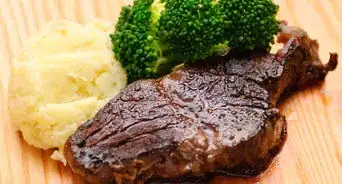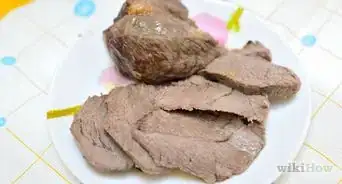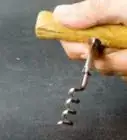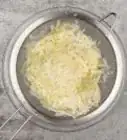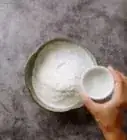This article was co-authored by wikiHow staff writer, Amber Crain. Amber Crain has been a member of wikiHow’s writing staff for the last six years. She graduated from the University of Houston where she majored in Classical Studies and minored in Painting. Before coming to wikiHow, she worked in a variety of industries including marketing, education, and music journalism. She's been a radio DJ for 10+ years and currently DJs a biweekly music program on the award-winning internet radio station DKFM. Her work at wikiHow supports her lifelong passion for learning and her belief that knowledge belongs to anyone who desires to seek it.
There are 7 references cited in this article, which can be found at the bottom of the page.
The wikiHow Culinary Team also followed the article's instructions and verified that they work.
This article has been viewed 122,580 times.
Learn more...
Cassava flour, traditionally called garri, is made with fresh cassava root. It's very common in West-African countries such as Ghana, Sierra Leone, and Nigeria. The process for making garri isn't difficult, but it does require some traditional techniques that may be unfamiliar to you. Don't worry—we're going to walk you through the process from start to finish and explain everything you need to know!
Steps
Community Q&A
-
QuestionHow will I make my garri look good?
 Community AnswerThere are different specie of cassava. The preferred specie is the red cassava. For best result, peel the skin and wash almost immediately after it's dug up. Grinding should be done in less than an hour after peeling, and include considerable quantity of palm oil to give the garri a light-yellow color. (The immediate grinding is to prevent the cassava from developing black spots on its skin.) After grinding, dry in a porous bag and drain water within 24 hours to prevent a sour taste afterwards. Frying the powdered cassava to garri form should be done in a wide frying pan and turned with a piece of calabash to prevent burning during the process.
Community AnswerThere are different specie of cassava. The preferred specie is the red cassava. For best result, peel the skin and wash almost immediately after it's dug up. Grinding should be done in less than an hour after peeling, and include considerable quantity of palm oil to give the garri a light-yellow color. (The immediate grinding is to prevent the cassava from developing black spots on its skin.) After grinding, dry in a porous bag and drain water within 24 hours to prevent a sour taste afterwards. Frying the powdered cassava to garri form should be done in a wide frying pan and turned with a piece of calabash to prevent burning during the process. -
QuestionIs the sourness in garri from fermentation?
 Community AnswerYes. The sour taste in garri comes from the fermentation. The longer you keep it before frying, the more sour it becomes.
Community AnswerYes. The sour taste in garri comes from the fermentation. The longer you keep it before frying, the more sour it becomes. -
QuestionHow can I make my garri extremely starchy?
 Community AnswerAfter packing in sacks for drilling, avoid drilling too dry so that the starchy water is retained as it ferments. The retained water is lost to evaporation.
Community AnswerAfter packing in sacks for drilling, avoid drilling too dry so that the starchy water is retained as it ferments. The retained water is lost to evaporation.
References
- ↑ https://www.sciencedirect.com/topics/medicine-and-dentistry/cassava-flour
- ↑ https://www.dominicancooking.com/19155-how-to-peel-yuca-cassava.html
- ↑ https://www.dominicancooking.com/19155-how-to-peel-yuca-cassava.html
- ↑ https://www.igboguide.org/guests/garri-process.htm
- ↑ https://edepot.wur.nl/175663
- ↑ http://www.fao.org/3/au140e/au140e.pdf
- ↑ https://www.sciencedirect.com/topics/medicine-and-dentistry/cassava-flour
- ↑ http://www.fao.org/3/au140e/au140e.pdf
- ↑ https://www.sciencedirect.com/topics/medicine-and-dentistry/cassava-flour
-from-Raw-Cassava-Step-1-Version-2.webp)
-from-Raw-Cassava-Step-2-Version-2.webp)
-from-Raw-Cassava-Step-3-Version-2.webp)
-from-Raw-Cassava-Step-4-Version-2.webp)
-from-Raw-Cassava-Step-5-Version-2.webp)
-from-Raw-Cassava-Step-7-Version-2.webp)
-from-Raw-Cassava-Step-8-Version-2.webp)
-from-Raw-Cassava-Step-9.webp)
